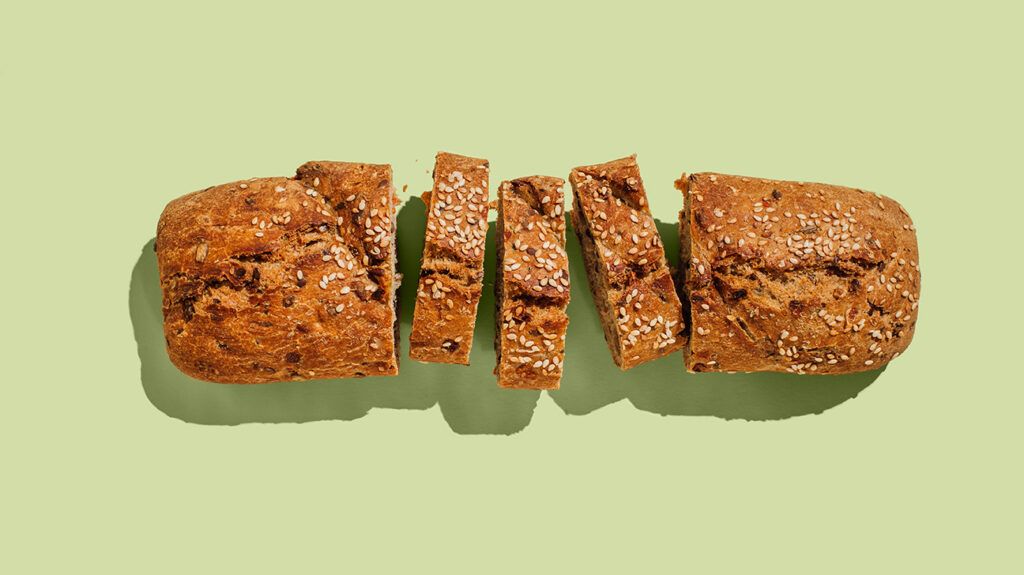Vasectomies and masturbation don’t lower your testosterone levels

Let’s face it: if you’ve been diagnosed with low testosterone, you’ve probably been scouring the internet for answers. Did your testosterone decrease because you spent years drinking alcohol? Do you have low testosterone because you smoke cigarettes? What about that kick to your groin you suffered during that one soccer match? Or maybe you’re worried that your low testosterone was caused by your prior vasectomy or even, masturbation.
There’s a ton of misinformation out there about low testosterone (hypogonadism). Urologist Lawrence S. Hakim, MD, debunks some of the myths and helps answer some of your most burning questions.
Does masturbation lower testosterone?
Let’s address this myth head on: no, hypogonadism is not caused by frequent masturbation or sex — and masturbation doesn’t have any long-term effects on your testosterone levels. When considering short-term effects, however, more research is needed, as several studies seem to conflict with one another.
Testosterone is linked to your sex drive and sexual performance, so participation in any sexual activity — by yourself or with a partner — will temporarily give your testosterone levels a boost before they return to regular levels after achieving orgasm. One study discovered testosterone levels were mildly higher in men after a three-week period of abstinence. But another small study suggested that frequent masturbation before strength training workouts could provide a prolonged boost in testosterone levels and assist with muscle growth, though more research is needed.
Either way you look at it, there is no proven, scientific evidence of long-term negative effects on testosterone levels from masturbation or sexual activity. So rest easy knowing it won’t harm your testosterone levels in any way.
Does a vasectomy lower testosterone?
Maybe you’ve been considering a vasectomy but haven’t quite finalized your decision yet because you’re worried about the side effects. Or maybe you’ve already been snipped and you’re wondering What if my vasectomy caused my decrease in low testosterone? Wherever you are on that journey to understanding the ins and outs of this simple and potentially reversible procedure, you should know that a vasectomy doesn’t impact your testosterone levels at all.
“People might mistakenly think of a vasectomy as removing the testicles, but you’re not removing the testicles — you’re performing a procedure to disrupt the flow of semen from the testicles to the urethra,” says Dr. Hakim. “A vasectomy has zero impact on testosterone production.”
Does soy lower testosterone?
Relax. You don’t have to cut back on your grande iced triple-shot espresso caramel macchiatos with soy milk (unless of course you’re worried about the effects of caffeine on your overall health).
Soy is a plant-based protein found in edamame, tofu, whole soybeans and a whole host of baked goods. Unfortunately, there’ve been longstanding rumors that consuming soy can lower your testosterone levels and increase estrogen levels. It’s true that a healthy diet can impact your testosterone levels in that it keeps your body optimized to carry out various biological functions — and an increased BMI (body mass index) is often linked to low testosterone. But research into the effects soy has on testosterone levels are conflicting.
One study from 2007 that examined 12 men ages 25 to 47 discovered that consuming soy protein powder over the course of 4 weeks led to a decrease in testosterone — levels that eventually increased to normal within 2 weeks of discontinuing soy protein powder use.
But another study that analyzed findings from 41 peer-reviewed reports published from 2010 to April 2020 revealed that there were no significant effects on testosterone levels caused by soy and phytoestrogens (plant-derived estrogen-like compounds).
So while it appears that soy in excess may have some minimal effect on short-term testosterone levels, indulging in bowls of edamame won’t weaken your reserve of testosterone to the point of hypogonadism — or erectile dysfunction, for that matter.
Does smoking or drinking alcohol lower testosterone?
This one is a bit more nuanced. There are conflicting studies concerning the effect of smoking on testosterone levels. A 2021 study from Egypt demonstrated that serum testosterone levels among smokers were significantly lower compared with nonsmokers. This confirmed earlier studies revealing a significant decrease in total testosterone levels among smokers compared to nonsmokers. While the exact mechanism is unknown, researchers have hypothesized that smoking lowers testosterone levels as a result of damaging Leydig cells in your testicles, which are responsible for testosterone production.
However, other studies have found higher testosterone levels among smokers. Researchers have developed several theories for this, one of which suggests that this increase may be related to smokers having increased levels of sex-hormone-binding globulin (a protein that binds to testosterone and controls how much your body can use).
Even though the exact mechanism of elevated testosterone levels in smokers is not known, there is some concern that the temporary boost or “false elevation” in testosterone levels from smoking may actually be masking undiagnosed hypogonadism.
We do know that smoking often has a negative effect on erectile function because of damage to your blood vessels and the development of atherosclerosis (hardening of your arteries). Smoking can also lead to damage to your heart and lungs.
“Either directly or indirectly, smoking does affect sexual and overall general health,” says Dr. Hakim.
And alcohol functions similarly — excessive alcohol not only lowers your testosterone, but it can decrease your overall libido and cause a variety of other issues that puts additional stress on your body. Excessive alcohol use can lead to damage to the Leydig cells in your testes and may also interfere with the release of certain hormones that affect your testosterone production.
In general, you want to participate in activities that promote a healthy lifestyle because it reduces the overall stress your body is required to handle. And any activity that promotes good health will be beneficial to your biological functions, like producing testosterone and other hormones.
“Anything that negatively affects overall health can diminish testosterone levels,” says Dr. Hakim. “Smoking and excessive alcohol use are controllable factors that you want to eliminate or at least decrease significantly.”
Does titanium dioxide lower testosterone?
Titanium dioxide is a controversial topic at the moment. This white, fine, mineral powder is used in a variety of everyday products — from sunscreens and cosmetics to plastics, food colorants and toothpaste. The inorganic compound is used most often to provide a whiter, bright pigment to products. While the U.S. Food and Drug Association allows this compound to be added to food in the U.S., titanium dioxide was recently banned as a food additive by the European Commission, citing its ability to cause damage to your DNA.
Many concerns regarding titanium dioxide revolve around its potential to be carcinogenic, but what does it do to your testosterone levels? The answer is: we just don’t know enough yet. One small model study showed titanium dioxide caused a decrease in testosterone synthesis, but more research is needed to determine just how titanium dioxide affects testosterone levels in humans. Until we know more, some researchers suggest limiting your intake of titanium dioxide whenever possible.
What else can affect testosterone levels?
So, now that we debunked some popular myths and shed light on others, what exactly does cause testosterone levels to drop?
For adult men and people assigned male at birth (AMAB), healthy testosterone levels normally range from 250 nanograms per deciliter (NG/dL) to 800 NG/dL. Typically, levels below 250-300 NG/dL are considered low or ‘hypogonadal.’
“There are many factors at play that have an impact on testosterone production and men with hypogonadism often present with many different signs or symptoms,” says Dr. Hakim. “It is important to understand the underlying cause so that we know how to treat it.”
Testosterone belongs to a group of sex hormones called androgens that are responsible for starting puberty, the development of your sexual reproductive system and your ability to reproduce. Testosterone is produced by all genders, but when there are low levels of testosterone in men or people AMAB, it can have a number of negative side effects that include:
“In some ways, the symptoms of low testosterone can be similar to what women experience when they begin menopause,” says Dr. Hakim. “These may include hot flashes, loss of facial hair or loss of bone mass, too.”
While testosterone levels may decrease naturally as we get older, the causes of low testosterone can be split into two categories: primary hypogonadism (which involves testicular injury) and secondary hypogonadism (which means your body isn’t producing enough testosterone likely because of interference from your hypothalamus and pituitary gland).
There is also a common clinical scenario in men who present with low testosterone levels and associated signs and symptoms. This syndrome is different from primary or secondary hypogonadism because it may have elements of both. The Sexual Medicine Society of North America has defined this syndrome as adult-onset hypogonadism (AOH) because it occurs commonly in middle-aged and older men.
Primary hypogonadism
Primary hypogonadism refers to a testicular injury or malfunction of some kind that causes a disruption of your testicles’ ability to produce testosterone. These causes can be genetic or acquired later in life through viral or bacterial infections, direct injuries or by other means like chemotherapy or radiation.
“Primary testicular failure is typically due to a problem within the testicles itself,” says Dr. Hakim.
Secondary hypogonadism
With secondary hypogonadism, your testicles may be normal, but are incapable of producing enough testosterone, possibly due to interference from your hypothalamus and pituitary gland. Located in your brain, your hypothalamus and pituitary gland help regulate your production of hormones. The causes of interference or disruption can also be genetic or acquired later in life either through lifestyle choices or other underlying conditions. Some of the most common causes of secondary hypogonadism include:
When to see a doctor
Understanding your low testosterone or hypogonadism diagnosis can be frustrating, but once you sift through all the misinformation and you talk to your doctor about your concerns, there are a variety of treatments that can help restore your testosterone levels and start you on the road to recovery.
Remember, if you experience any physical symptoms, fatigue, poor energy levels, a lack of libido or you’re just concerned about your own testosterone levels, it’s never too early to see your doctor for a checkup.






